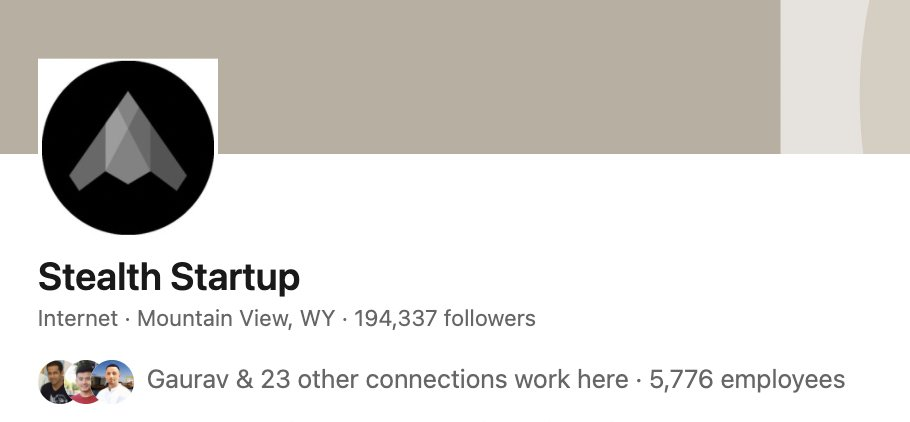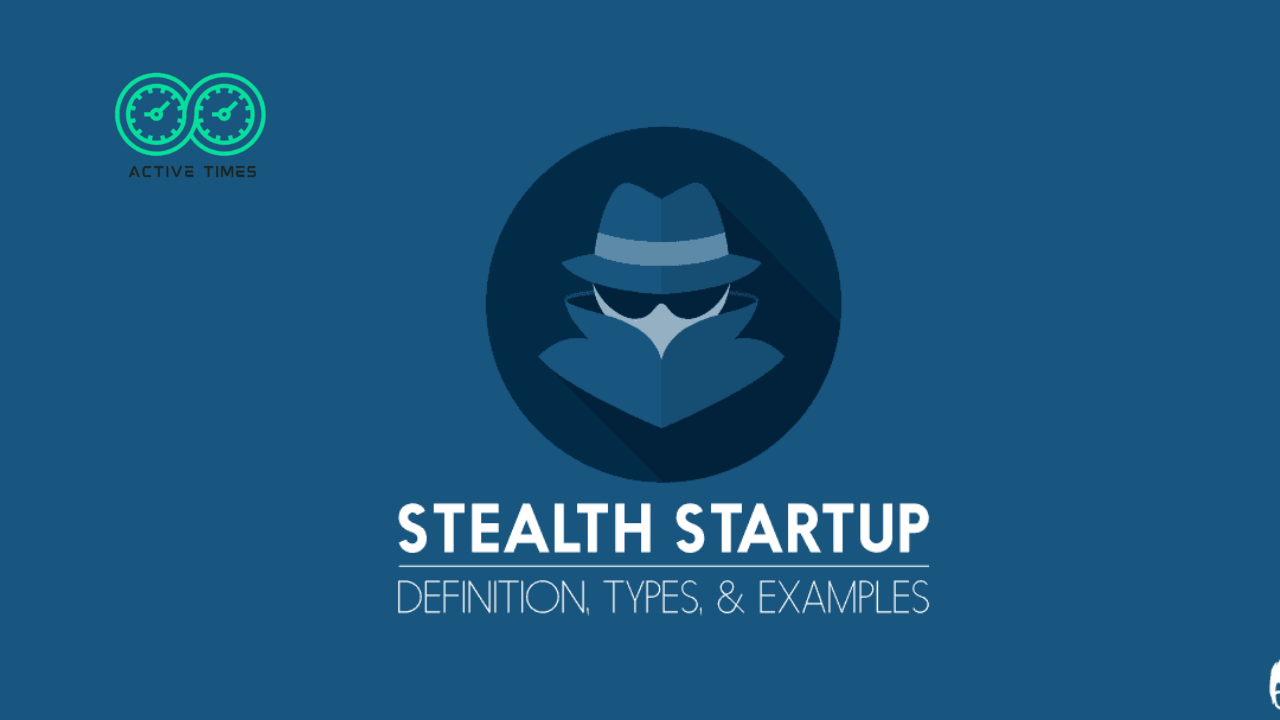In the fast-moving world of innovation and entrepreneurship, a “stealth startup” is like a secret mission. No press releases. No flashy websites. Just quiet building, with big ideas hidden under the radar. This mysterious approach raises eyebrows—and questions. So what exactly is a stealth startup, and why is it so hush-hush?
What Does “Stealth Startup” Mean?
A stealth startup is a new business that deliberately stays hidden from the public eye during its early development stages. Unlike traditional startups that promote their products or services even before launch, stealth startups keep things secret—sometimes even their name. This stealthy behavior helps protect their idea from competitors, avoid media attention, and work without pressure.
Most stealth startups are tech companies, especially in sectors like AI, fintech, cybersecurity, or biotech. These areas move quickly, and being first to market can make or break a company. That’s why some founders choose to operate in “stealth mode” until they’re ready to launch.
The term “stealth startup” is popular in the United States, where competition is fierce, and innovation happens fast. Startups want to make a big impact, but only when the time is right.
Why Do Startups Stay Quiet at First?
There are several reasons why founders decide to keep their startups under wraps. First and foremost is idea protection. If you’re building a game-changing product, announcing it too early could give competitors a head start. By staying quiet, you buy time to develop your product, file patents, and refine your business model.
Another reason is avoiding distractions. When you’re building something new, you need focus. Going public too early might invite attention from investors, press, or even critics—before your team is ready to handle it. Stealth mode gives founders breathing room to work without noise.
Also, stealth startups sometimes want to test market fit privately. They might be building something experimental and want honest feedback without public pressure. Or, they may want to pivot without judgment if the first idea doesn’t work out.
Lastly, it’s a smart strategy for creating a buzz. Believe it or not, being quiet can make people curious. The mystery builds hype. When the startup finally launches, it can make a big splash.
Types of Stealth Startups
Not all stealth startups are the same. In fact, there are different levels of secrecy. Let’s break down the three most common types of stealth startups:

Total Stealth Startups
These startups are completely hidden. No website. No public LinkedIn pages. No mention in the media. Often, even the team members are told to keep quiet. Their goal is to develop in total secrecy until the launch day. These startups are usually working on highly sensitive or groundbreaking technology, and revealing anything too early could jeopardize their competitive edge.
In many cases, total stealth startups only interact with a very small circle of investors, usually under non-disclosure agreements (NDAs). They may even operate under a code name or shell company until they’re ready to go public.
In-Stealth-Mode Startups
This is the most common type of stealth startup. These companies might have a legal business name, and maybe even a placeholder website, but they don’t reveal much about what they’re building. You might see vague statements like “Reimagining the future of finance” or “Building next-generation AI systems.”
In this mode, companies may raise seed funding or even Series A funding, but they don’t share product details. They operate quietly while still building relationships behind the scenes. This method offers a balance of privacy and flexibility.
Quiet But Funded
This type of startup has publicly known founders or investors, but their product is still a mystery. These companies often get attention not because of what they’re building, but because of who is behind them. Investors bet on the founder’s past success, even if they don’t know the new business idea yet.
These startups might hire employees and even build buzz on social media—but carefully. They walk the line between stealth and hype, revealing just enough to build interest without giving away the game.
Who Starts Stealth Startups?
Experienced entrepreneurs, ex-employees of big tech companies, or researchers are the most common founders of stealth startups. These are people who’ve been around the block and understand how fast ideas can be copied. They often start stealth projects because they want the freedom to innovate without scrutiny.
For example, someone who worked at Google or Amazon might start a stealth startup in AI. Or a cybersecurity expert might leave a Fortune 500 company to build a product that addresses the flaws they saw in their previous role. These founders usually already have investor relationships, and that helps them raise money even without a public product.
But stealth startups aren’t only for the rich and famous. Anyone with a bold idea—and the discipline to stay quiet—can start one. You just need the right strategy, team, and execution.
Stealth Startup Examples (Without Giving Too Much Away)
Ironically, many of the most famous companies once started in stealth. While it’s hard to find current stealth startups (because they’re stealthy), here are some past examples that began in secret:
- Apple’s iPhone development was done under extreme secrecy. Even within Apple, many teams didn’t know what others were working on.
- Magic Leap, the AR company, spent years in stealth mode before showing anything publicly. They raised billions before revealing a product.
- Palantir Technologies operated quietly for years, especially since its clients were mainly government agencies.
Today, you’ll often hear about companies raising millions in stealth—without saying what they’re building. That’s part of the strategy. They create buzz just by being mysterious.
How to Start a Stealth Startup
Starting a stealth startup takes careful planning. It’s not just about staying quiet—it’s about being strategic. Here’s what you need to focus on:

Protecting Your Idea
First, protect your intellectual property. That means filing for patents early, using NDAs with anyone you talk to, and limiting how much you reveal—even to friends or job candidates. The more you talk, the easier it is for someone to take your idea.
Also, choose the right legal structure. Many stealth startups register as Delaware C-Corps (common in the U.S.) and use generic names to avoid attention. You don’t want your company name to give away too much.
Choosing the Right Team
Team is everything in a stealth startup. You need trustworthy people who are great at what they do—and who are okay working in silence. Look for engineers, designers, or product managers who are mission-driven and don’t need outside validation.
Stealth means fewer announcements, no public product demos, and often no social proof. That’s not for everyone. But the right team will understand the vision and stay committed.
Pros and Cons of Stealth Startups
Pros:
- Protection from competitors: You keep your idea safe until you’re ready.
- No public pressure: You can build without constant feedback or scrutiny.
- Big launch moment: You control when and how you reveal your product.
- Freedom to pivot: You can change direction without the world watching.
Cons:
- Harder to hire: It’s tough to attract talent when you can’t say what you’re doing.
- Limited marketing: You can’t build an audience or get early user feedback.
- Investor skepticism: Some VCs want to see traction or product-market fit before investing.
- Isolation: Without outside feedback, you might miss important signals.
You’ll need to weigh these carefully. Stealth works well in some situations, but not all.
When to Come Out of Stealth Mode
The right time to go public is when your product is ready for real-world users. That doesn’t mean perfect—but it means functional and valuable. You want early adopters to test it, share feedback, and spread the word.
Some founders wait until they raise a certain amount of funding. Others come out when they land a key customer or hit a technical milestone. The key is to reveal yourself when you can make a strong impression.
Coming out of stealth should feel like a launch—but with purpose. Make sure you have a strong brand, clear messaging, and a story worth telling.
The Bottom Line
A stealth startup is more than just a secret project. It’s a smart way to build something bold without noise, competition, or distraction. Whether you’re developing revolutionary AI, a new fintech platform, or an unbreakable cybersecurity system, staying stealthy can give you a critical edge.
But stealth isn’t for everyone. It’s challenging, and it can be lonely. You don’t get applause, likes, or feedback. You just build—quietly.
Still, for the right idea and the right team, stealth mode can turn a big dream into a world-changing reality. And when the curtain finally lifts, all the silence makes the spotlight that much brighter.
